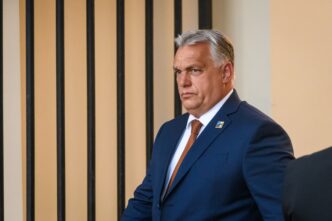Last year, the government achieved its target of allocating 2% of GDP to defense spending, meeting the requirements of NATO membership. However, the Trump administration has urged allies to increase this spending to 5% in the coming years. This proposed increase would more than double the current rate, amounting to tens of billions of euros for countries with substantial GDPs.
The challenge of funding this increase is acknowledged, with options including raising taxes, cutting spending, or increasing debt levels—all difficult political discussions currently taking place in the Netherlands. The coalition government remains committed to an average annual military support expenditure of €3.5 billion for Ukraine. Despite the inclusion of the right-leaning Freedom Party, led by Geert Wilders, which has often opposed military support for Kyiv, the Dutch stance remains firm in its commitment to Ukraine.
While coalition discussions are often tense, the Dutch government maintains its promise to deliver €3.5 billion to Ukraine as long as it remains in power. Concerns persist among NATO members about the future U.S. role in the alliance and its influence on European security. It has been confirmed that the U.S. has stepped down from chairing the Ukraine Defence Contact Group (UDCG), a role it held under the Biden administration.
Newly appointed Defense Secretary Pete Hegseth has hinted at a potential reduction of the 100,000 U.S. troops stationed in Europe under NATO. However, no official decision has been made. The Dutch defense minister emphasized the importance of any troop reduction being part of a collaborative plan rather than a unilateral move by the U.S. administration.
Despite uncertainties regarding the U.S. role in NATO, the Dutch government stresses the necessity of U.S. involvement for European security. The United States remains a crucial partner, and maintaining a strong NATO is seen as mutually beneficial. The Dutch defense minister highlighted the importance of developing a shared strategy that allows European countries to gradually assume more responsibilities while the U.S. reallocates some resources globally.
Your World Now
The proposed increase in defense spending to 5% of GDP could have significant implications for NATO member countries. For individuals, this might translate into higher taxes or shifts in government spending priorities, potentially affecting public services and social programs. The financial burden of increased defense budgets could influence national economies and impact the cost of living.
Moreover, the discussions around the U.S. role in NATO and potential troop reductions could lead to changes in the security landscape in Europe. This might affect perceptions of safety and influence defense policies across the continent. As European countries consider taking on more responsibilities within NATO, there could be broader implications for regional stability and international relations.
Overall, these developments highlight the ongoing challenges and complexities of maintaining a robust defense alliance in a changing geopolitical environment. Citizens and policymakers alike will need to navigate these shifts to ensure security and stability in the region.






